P2P FAQ
I regularly receive questions from you about P2P lending. So you don’t have to wait for an answer all the time, I have collected some of them here. The page will be updated constantly.
Table of Contents
Is P2P lending safe?
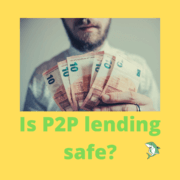 P2P lending is the lending of money to others. How secure P2P lending is therefore depends on the creditworthiness of the debtor. But even that does not mean security.
P2P lending is the lending of money to others. How secure P2P lending is therefore depends on the creditworthiness of the debtor. But even that does not mean security.
Basically, P2P lending is NOT SECURE. It is a risky form of investment and if you lend your money, there is a risk that you will not get it back. The same applies to shares, funds and many other forms of investment.
Can you make P2P lending safer for you as an investor?
Diversification is the solution in my opinion. I invest in different loans on each platform. Different focuses, different ratings, different regions and countries.
And then I invest on several P2P platforms. These are large platforms like Bondora or Mintos, but also smaller ones. Here I choose the distribution, how it feels good right now.
How does P2P lending works?
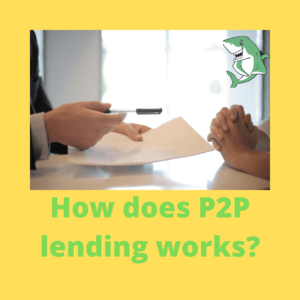
So P2P lending is by no means secure. But diversification can help every investor to reduce his personal risk. And I have found an opportunity/risk ratio in which I invest 20% of my assets in P2P lending with a clear conscience.
P2P is the abbreviation for person to person. The term is especially well known for networks. Here two people connect directly with each other. But even here there is the possibility that many individuals connect with each other and build a P2P network.
It is very similar with P2P lending. Only without a computer. Here investors connect with people who need money for something. Some receive the money and others receive previously agreed interest as compensation. And according to the agreement the money is then paid back.
To minimize the risk here from an investor’s point of view, you can invest small shares in many different loans. This way you spread the risk of a loan default.
In addition, P2P platforms are meeting places where credit requests and investors meet. In many cases, the P2P platform acts as an intermediary. It checks the credit requests and creditworthiness and gives it a rating – or rejects the request. Investors can then invest in the loans from as little as 5 euros or 10 euros.
For example, an investor who invests 1,000 euros in Mintos and provides 10 euros per loan will end up investing in 100 loans. Statistically seen and depending on further components this is a very good distribution to minimize the risk of default.
If everything goes according to plan, the investor gets his money back including interest. And the borrower can afford what he previously lacked the money for.
Why invest in P2P Lending?
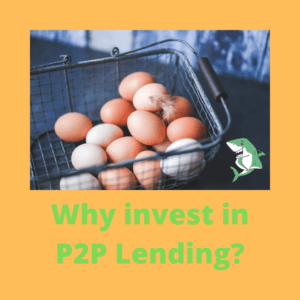 What makes a successful investor? Quite a lot of people ask themselves this question. And I can’t answer it either. I don’t have a Rolex or a Lambo or several millions in my account.
What makes a successful investor? Quite a lot of people ask themselves this question. And I can’t answer it either. I don’t have a Rolex or a Lambo or several millions in my account.
But if you look at the past, two groups of investors were particularly successful:
1) Those who knew exactly what they were doing (Buffett, Soros, Fischer etc.)
2) Those who diversified their assets widely
The first ones were undoubtedly more successful. But I don’t know that much about it and at least I don’t have the time to take care of it yet.
So for me, the main issue here is diversification. And I think P2P lending is very well suited for this. P2P loans have not shown that they are related to the stock market, neither in the Corona crisis nor before in the financial crisis. Of course some platforms have been hit by the P2P sector, but for other reasons.
I myself am currently invested with about 15% of my assets. At the moment this share is declining a bit, because I was mainly active in the stock market. But P2P lending will remain a good addition to my portfolio for diversification.
Who regulates P2P Lending?
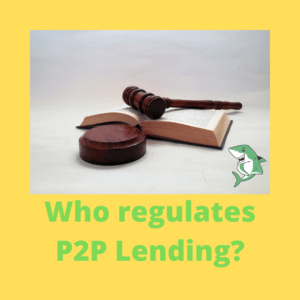 There is an EU directive that provides for the regulation of P2P platforms. However, this directive is currently not mandatory for the EU member states.
There is an EU directive that provides for the regulation of P2P platforms. However, this directive is currently not mandatory for the EU member states.
Latvia has announced that it will introduce its own regulation for 2020. This is to be based on the EU directive. This means that P2P platforms based in Latvia must be subject to this regulation.
In the respective country the regulation will be carried out by the competent authority. In Latvia this is done by the Alternative Financial Services Association of Latvia. As a reaction to this, some platforms moved their headquarters to other EU countries last year.
Is regulation an advantage?
I can only express my own opinion here. Basically, I think that regulation in this area makes sense to a certain extent. As an investor, regulation and standardisation provides more security. And that in turn means less risk for my money.
In this respect I welcome any platform that is subject to regulation in Latvia or anywhere else in the world. And currently it looks as if many more platforms will remain in Latvia and deal with regulation.
Is P2P Lending profitable?
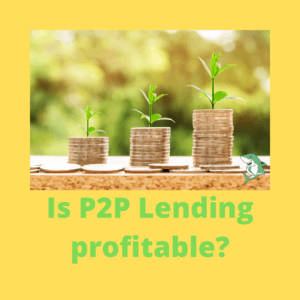
For a company to survive in the long term, it must operate profitably. Especially in the Corona crisis some P2P platforms are in trouble right now. Some of them have even disappeared from the market. This raises the question: Is P2P lending profitable?
Especially as investors we are interested in the answer to this question. After all, we want to be “sure” that our money is not exposed to any risk. However, this assumption is not realistic.
Nevertheless there are some platforms that publish their annual reports. Perhaps the economic figures are not immediately understandable. In any case, from the written part on the past period onward, everyone can understand them. The same applies to the outlook the company gives for the next period.
And here the question of profitability is also answered. Is the P2P platform able to generate profit? And if so, how is this profit used?
The more information is disclosed at the point, the better. And if the annual report is certified by an independent third party, we as investors should place our trust in the platform.
What is a P2P platform (doing)?
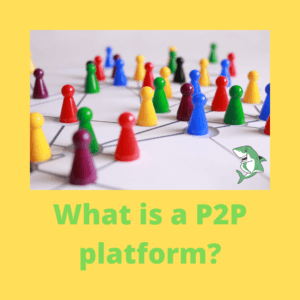
A friend comes to you and asks if you can lend him money. He needs it for a new laptop. You lend him the money and agree on how to pay it back. And if all goes well, you’ll get your money back with some interest.
That’s what a P2P platform does. It arranges the terms of a loan for you. From initiation to collection. But it’s not like you just lend your money to friends. P2P platforms have many credit requests. Accordingly, there are criteria by which the request is evaluated.
There are a number of criteria, such as creditworthiness or experience from past loans. In addition, there are many more that were introduced by the platform itself. And then?
Then the P2P platform mediates the credit between the person who has requested money and the person who wants to invest money. This creates a marketplace where investors can choose the loans they want to invest in. Depending on their orientation, they can then invest in many different loans.
There are platforms that act as loan originators themselves as well as platforms that offer the loans of several loan originators. But for me as an investor, they take over and organize everything in the background.
For example, they take over the rating, the agreement, the monitoring of the repayment and the complete dunning process if someone doesn’t pay. All I have to do is click “Invest” and my money starts working. That’s it!
What is a Buyback Guarantee (BBG)?
 A buyback guarantee often states that in case of an overdue loan, both the investment and part of the interest will be paid back to the investor. Technically, this is done by a company that buys the shares in the P2P loan from the investor for the guaranteed value. This means that the investor is free of the risk that the P2P loan might default.
A buyback guarantee often states that in case of an overdue loan, both the investment and part of the interest will be paid back to the investor. Technically, this is done by a company that buys the shares in the P2P loan from the investor for the guaranteed value. This means that the investor is free of the risk that the P2P loan might default.
Often these buyback guarantees are limited to the company that buys the loans. This is safe (and very convenient for the investor) as long as the default rate is low.
It becomes problematic when many buybacks have to be made in a short period of time. In this case, in case of doubt, the amount of the guarantee exceeds the available amount of the company. In this respect, the buyback guarantee is particularly valuable and useful if the company behind it is financially strong.
So, be happy about a BBG, but also check who is behind it. The bigger and more reliable the partner is, the more secure the BBG and thus your P2P investment is.
How do P2P platforms earn money?
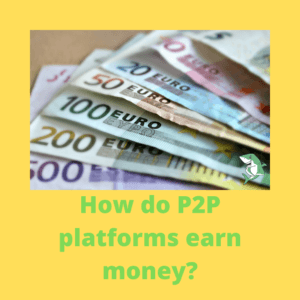 P2P platforms are economically oriented companies. They act as intermediaries between credit enquiries and investors. They receive some of their credit requests through their own company or from loan originators.
P2P platforms are economically oriented companies. They act as intermediaries between credit enquiries and investors. They receive some of their credit requests through their own company or from loan originators.
A debt interest rate is agreed with the borrower, which has to be paid on the borrowed capital. The riskier the loan, the higher this interest rate is for the borrower. The P2P platform passes on part of this interest income to its investors. With the other part it finances the platform, the technology and of course the staff. Depending on the orientation, a reserve for the default of loans must also be created.
In this respect P2P platforms act similar to a bank. However, their business is often only the mediation of credit requests to investors. In Germany, for example, auxmoney needs a banking license to operate. In the Baltic States and especially in Latvia, the requirements have just been adapted to provide more security. Consequently, corresponding regulations apply here, although they are far less stringent than at other financial institutions.
Use P2P lending for bad credit?
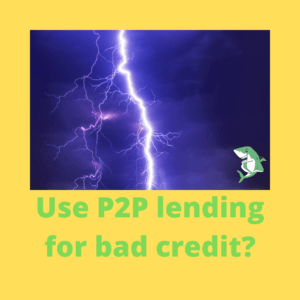 Are only bad loans issued on P2P lending platforms? Depending on where you come from in Europe or the world, it is not always easy to get a loan from the bank. Often it is also quite expensive and time consuming.
Are only bad loans issued on P2P lending platforms? Depending on where you come from in Europe or the world, it is not always easy to get a loan from the bank. Often it is also quite expensive and time consuming.
But there is an increasing possibility to get money from other sources. For example through P2P lending. But that does not mean that the loans are bad because of that.
The P2P platforms also have their own rating systems that check loans in advance. Bondora and Mintos publish from time to time figures, how many of the credit requests are allowed at all. And only these the investor gets then also.
In the Baltic States, for example, payday loans are very well known. This means that a private person or even a company can need a loan for a very short time, usually only a few days. So if the entrepreneur has to pay a bill on the 15th of a month, but does not receive any money until the 20th, he can bridge the time with a loan. Is this a bad credit?
In the end, everyone has to know for themselves what they are investing their money in.
Where to start with P2P lending?
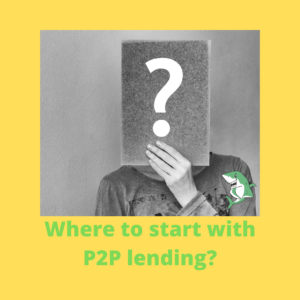 The second question, after the question what P2P lending is all about, is often how to start with an investment. But there is no real answer to this question. The answer is derived from the portfolio to date and, above all, the goal.
The second question, after the question what P2P lending is all about, is often how to start with an investment. But there is no real answer to this question. The answer is derived from the portfolio to date and, above all, the goal.
For example, I want the highest possible passive income from many diversified sources. I started back then with the “largest” platforms. Here, the risk of losing my money was the lowest for me.
I designed a P2P target scenario for myself. That means I have savings targets for each platform. If one of them is reached, the next platform is saved. And so on. Until one day I start over again.
If you want to start with P2P lending, you should look into your portfolio first. Depending on what you are looking for, you should then choose the platform(s) that best suits you to get started. And then just get started! Don’t start with the full amount immediately, but start with a part of it and watch how the platform works.
Even today I start with 250 Euro for new platforms and see how it works. And if it fits for me, after 2-3 months I start to pay in here regularly monthly until I reach my savings goal.
How do I calculate my passive income (goal)?
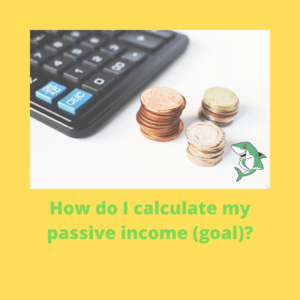 After my mail yesterday I was asked directly how I calculate my savings targets. I’d be happy to show you. But the important thing is, these are MY savings goals from MY portfolio. You should adjust them accordingly for your portfolio.
After my mail yesterday I was asked directly how I calculate my savings targets. I’d be happy to show you. But the important thing is, these are MY savings goals from MY portfolio. You should adjust them accordingly for your portfolio.
In general, the first thing I do is to indicate the interest rate. Take Mintos (12%), Bondora Go&Grow (6.75%) and Twino (10%) as examples. I then check them against experience values from Lars or the P2PMillionaire.
And then I set a savings target of 250 Euro passive income per month. So if 6.75% should bring me 12 x 250 Euro per year, I have to calculate 3000 divided by 0.0675 to get 44.444 as result. This is my savings target for Bondora.
For Mintos the result is much less because of the higher interest rate: 3000 divided by 0,12 equals 25.000 Euro. And for Twino it’s a bit more with 30,000 euros.
These savings targets must fit into my overall portfolio. That means that I don’t want to exceed my P2P share in the portfolio. For example, if I have a P2P share of 20%, my portfolio has to be 500k to reach the numbers.
What is the difference between Go & Grow / Invest & Access and the Auto-Invest?
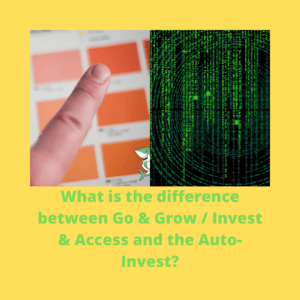 P2P platforms, where you have to choose the credits yourself, there are very few left. Almost everywhere you can find at least a rudimentary auto invest.
P2P platforms, where you have to choose the credits yourself, there are very few left. Almost everywhere you can find at least a rudimentary auto invest.
But what’s the difference between a Auto-Invest and products like Bondora Go & Grow or Mintos Invest & Access?
While in Auto-Invest you set the parameters yourself and become a lender yourself, in Auto-Invest products you only pay into a kind of pool or fund.
With Auto-Invest, you as an investor conclude the loan agreement for your share and, with a little luck, you will receive both your investment and the interest back over the term. If you want to get your money back earlier, you have to sell the loan on the secondary market.
This is different with Go & Grow and Invest & Access. Here you pay into a kind of fund. The platform then takes care of all the rest for you. This means that they conclude the loan agreement accordingly. If you want to get your money back, you can make a Withdrawal Request. Depending on how much cash flow is available at the moment, you will get your money back.
As an investor, these products are very simple. You transfer the money and the platform does the rest itself. You don’t have to choose a strategy, check ratings, adjust loan sizes or anything else. Everything is done for you.
Especially for beginners but also for experts who don’t want to spend too much time, Go & Grow and Invest & Access offer a great alternative to the typical auto investment. But this does not change the fact that P2P lending remains risky and the products are not overnight accounts.
Bondora – Let’s start the No-Spend-Challenge
 Today is the first day of the new quarter. Those of you who know me know that I now enjoy working in these 90-day periods. Every quarter I set myself new goals and pick out the one or other 90 day challenge.
Today is the first day of the new quarter. Those of you who know me know that I now enjoy working in these 90-day periods. Every quarter I set myself new goals and pick out the one or other 90 day challenge.
Last week Bondora inspired me with the No-Spending-Challenge. What is it all about?
“After you’ve decided on a goal, pick some areas from your everyday life you would like to start cutting back on, for example, food deliveries, bottled water, subscriptions, or beauty products.
Challenge yourself to not spend on the chosen things for a period of time. Stay disciplined and watch the money add up!
As a prelude I published my article on Bondora Go & Grow today. I myself will go through the 90 day challenge and give you some insights here.
You want to join in too? Then I will go to my bio and click on the link to the blog.
What happens when a loan is late?
 You invest in P2P lending. And soon after your investment you will see a note in your investor account that a loan was not paid on time. It’s not pretty, but it’s almost normal in P2P lending. So get used to it, because it’s part of it.
You invest in P2P lending. And soon after your investment you will see a note in your investor account that a loan was not paid on time. It’s not pretty, but it’s almost normal in P2P lending. So get used to it, because it’s part of it.
But before you panic, you should check with the P2P platform what happens next. Often this is already described in the FAQ of the platform.
Everybody is going through a calculation. This means that a bunch of bailiffs will not be sent out immediately to collect your 10 € loan. Rather, there is a phase in which the platform sends reminders and later reminders.
The further the delay progresses, the more concrete the measures become. Bondora for example hands over the claim to the court for collection on the 75th day. Mintos redeems the loan after the 60th day via the buyback and hands over the loans for collection.
Depending on whether the borrower is still able to pay, the amount is then recovered. If the credit fails due to lack of mass, this would be without a functioning buyback at the expense of the investor.
P2P lending includes the risk of defaulting on the loan. On many platforms where I am invested, there are between 10% and 50% of loans that are delayed. So far, I have no loan that has defaulted. But I’m just waiting for it. Especially with a powerful buyback guarantee, investors avoid the waiting period. If the guarantor can’t afford more either, the guarantee is worth nothing either.
How much shall I invest into a P2P loan?
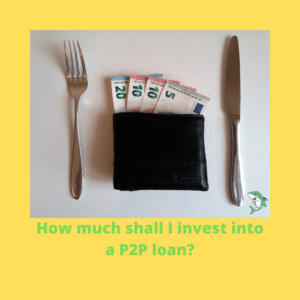 This question is asked very often. The problem is that probably no one but yourself can answer it. There are people who would never invest in P2P lending. And then there’s me, who has 20% of his assets invested in P2P loans. Others have much higher percentages.
This question is asked very often. The problem is that probably no one but yourself can answer it. There are people who would never invest in P2P lending. And then there’s me, who has 20% of his assets invested in P2P loans. Others have much higher percentages.
Step #1 Calculate the P2P share in your portfolio
If you have 1.000 Euro on the site and want to invest, take only 100 Euro of it for now. And then make experiences with it. Also, invest only 250 Euros in new platforms today and wait a while to see how things develop.
Step #2 Find the right platform
Especially in the case of real estate platforms, the minimum amount per investment is often 50 euros. At 100 euros, that is a lot. Diversification is virtually impossible.
Mintos, Debitum Network, Twino, viainvest and many other platforms have the minimum at 10 Euros. Bondora even at 1 Euro. At the start you can diversify much better with such amounts.
Step #3 Set yourself an investment goal
Often the P2P platform shows the average return somewhere in the statistics. With this I then calculate my savings target. So if I want to receive monthly 25 Euro interest from Bondora Go & Grow, 25 x 12 = 300 Euro p.a. / 6.75%. My savings target would be 4.445 Euro to receive 25 Euro monthly passive income from Bondora.
“An idiot with a plan can beat a genius without a plan” – Warren Buffett
So it is quite easy to answer the “how much” and to find a reasonable strategy.
Is there a maximum amount at P2P lending?
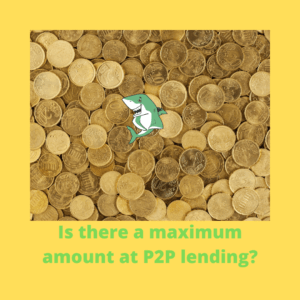
Do you also dream of a 1 million P2P account?
First of all, the question arises whether you can invest that much on a platform?
The good news: Yes! At Mintos, for example, the P2PMillionaire has an account with over 1 million Euros. Wow!
At Invest & Access the limit was raised to 500,000 Euros a few months ago (previously 200,000 Euros).
You can set the investment target at Bondora Go & Grow to 2.5 million euros. So I assume that you can also invest your millions there. I know of investors who have invested over 200,000 euros there.
Robo.Cash recently raised the maximum to 180,000 euros. Before that, only 10,000 euros could be invested.
Whichever platform or platforms you entrust your money to, it takes a little while until you reach the maximum. So, have fun pushing the limits 🙂
